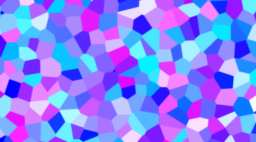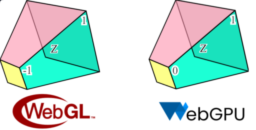- the video explains BC texture compression
- covers how the compression format works and the differences that exist
- explains guidelines on which format to use for different use cases
- additionally also covers SRGB color space and explains when/how to use it

- the paper introduces a new method for the triangle mesh reconstruction from an SDF representation
- The presented method is based on the insight that each SDF sample represents a spherical region
- generates an initial mesh and then shrinks the shell using a gradient flow approach

- the article presents improvements to using floating point atomic operations if all inputs have the same sign
- additionally discusses how half and double floating point numbers might be operated on with uint atomics

- the article presents how to implement Worley/Voronoi noise
- starts with Voronoi shapes and expands to noise
- additionally presents how to animate the noise

- the article presents a set of differences between WebGL and WebGPU
- covers clip space, synchronization, mip-generation, canvas handling, and more

- the latest version of the raytracing analyzer adds support for visualizing the rays in the scene
- allows each ray to be visualized, heatmap information, and ray types
- presents how to analyze performance given the provided information

- the latest edition of the Memory Visualizer adds improved support for resource aliasing
- additionally adds support for post-crash analysis

- the article presents changes in the latest AMD GPU profiler update
- improved work graph, instruction search, output merger state visualization as well as shader hashes

- the blog post provides an introduction to the Gaussian Splatting rasterization technique
- discusses the technique, data collection, training as well as downsides of the technique

Thanks to Aras Pranckevičius for support of this series.
Would you like to see your name here too? Become a Patreon of this series.